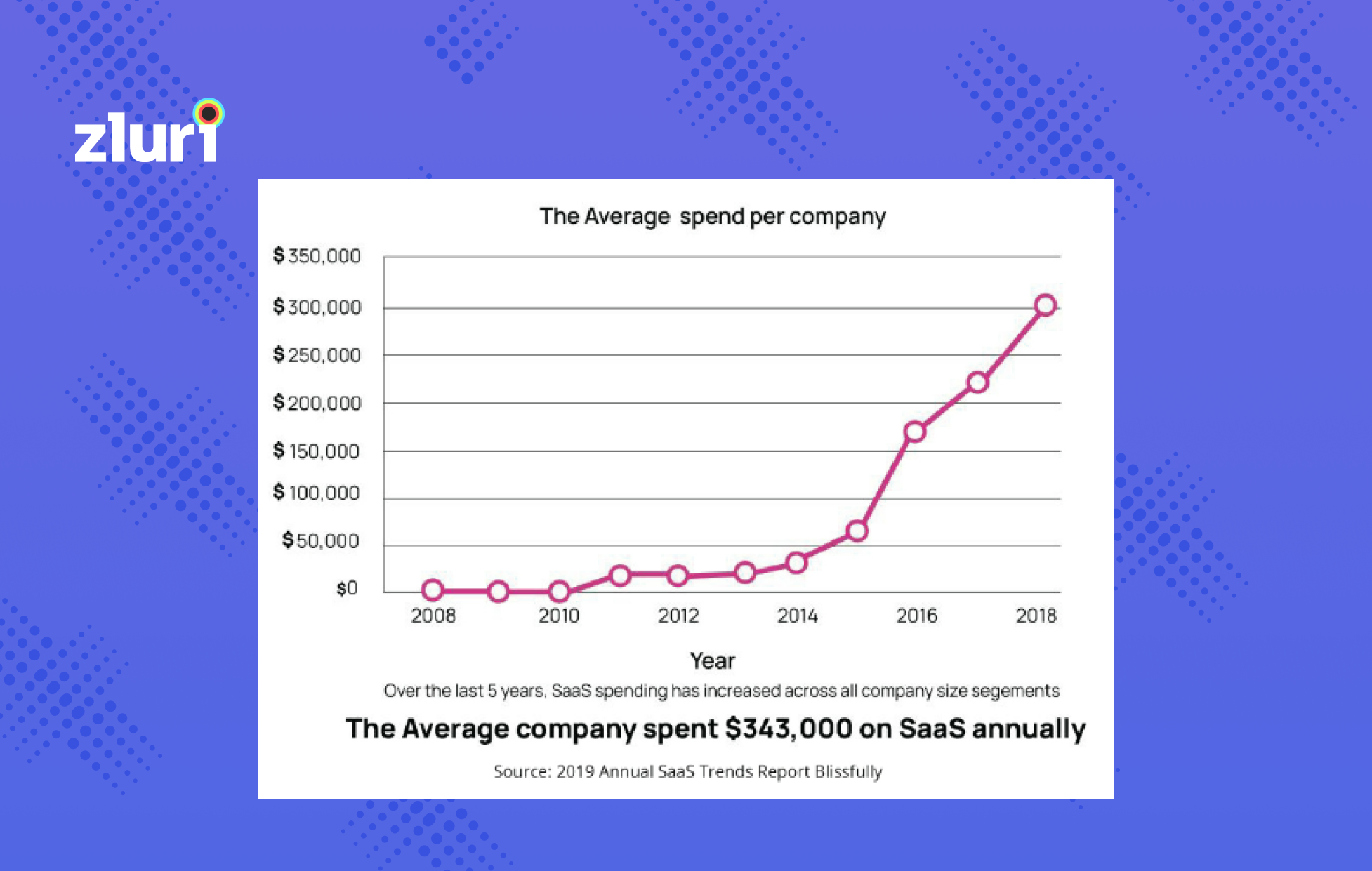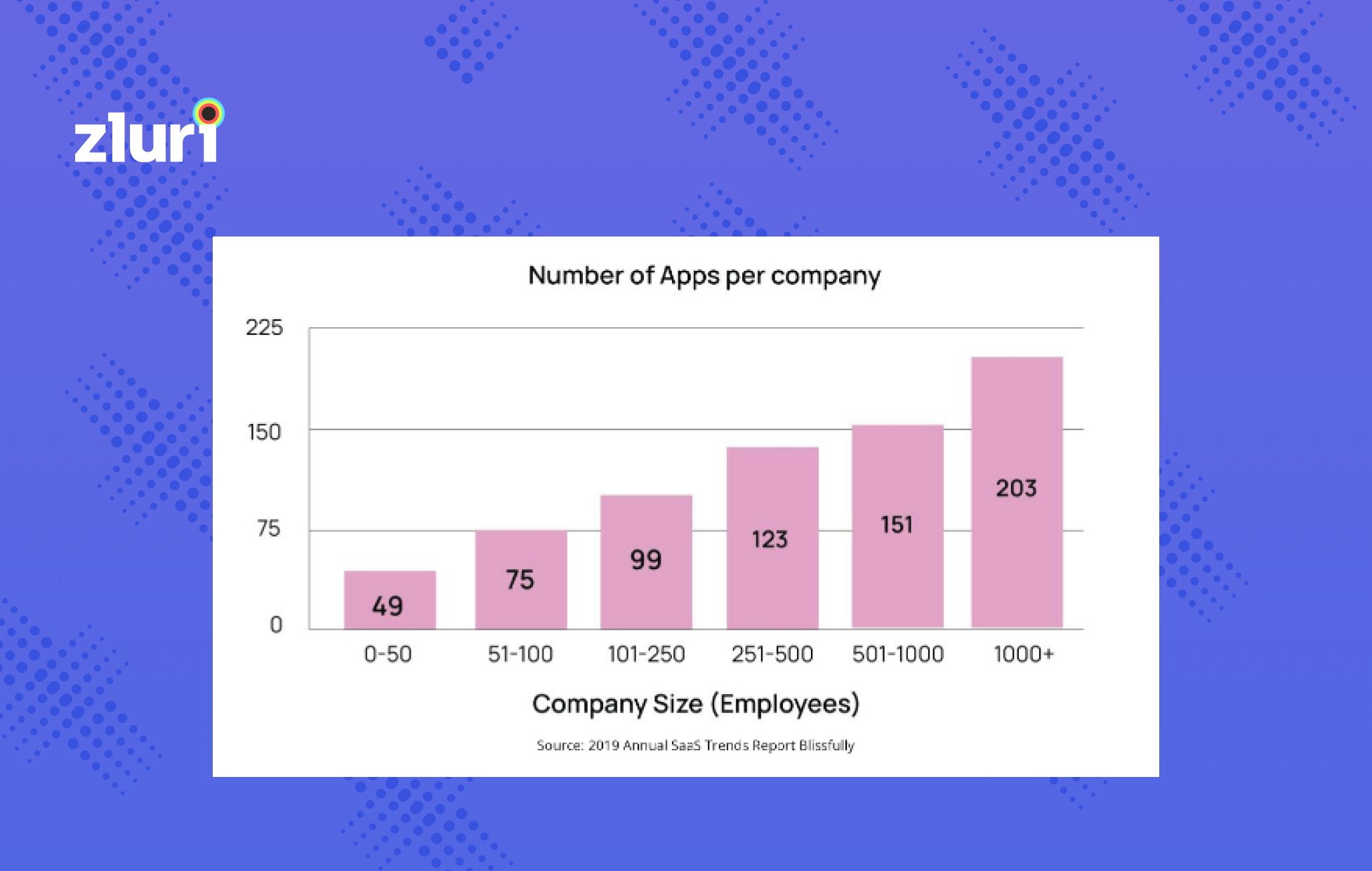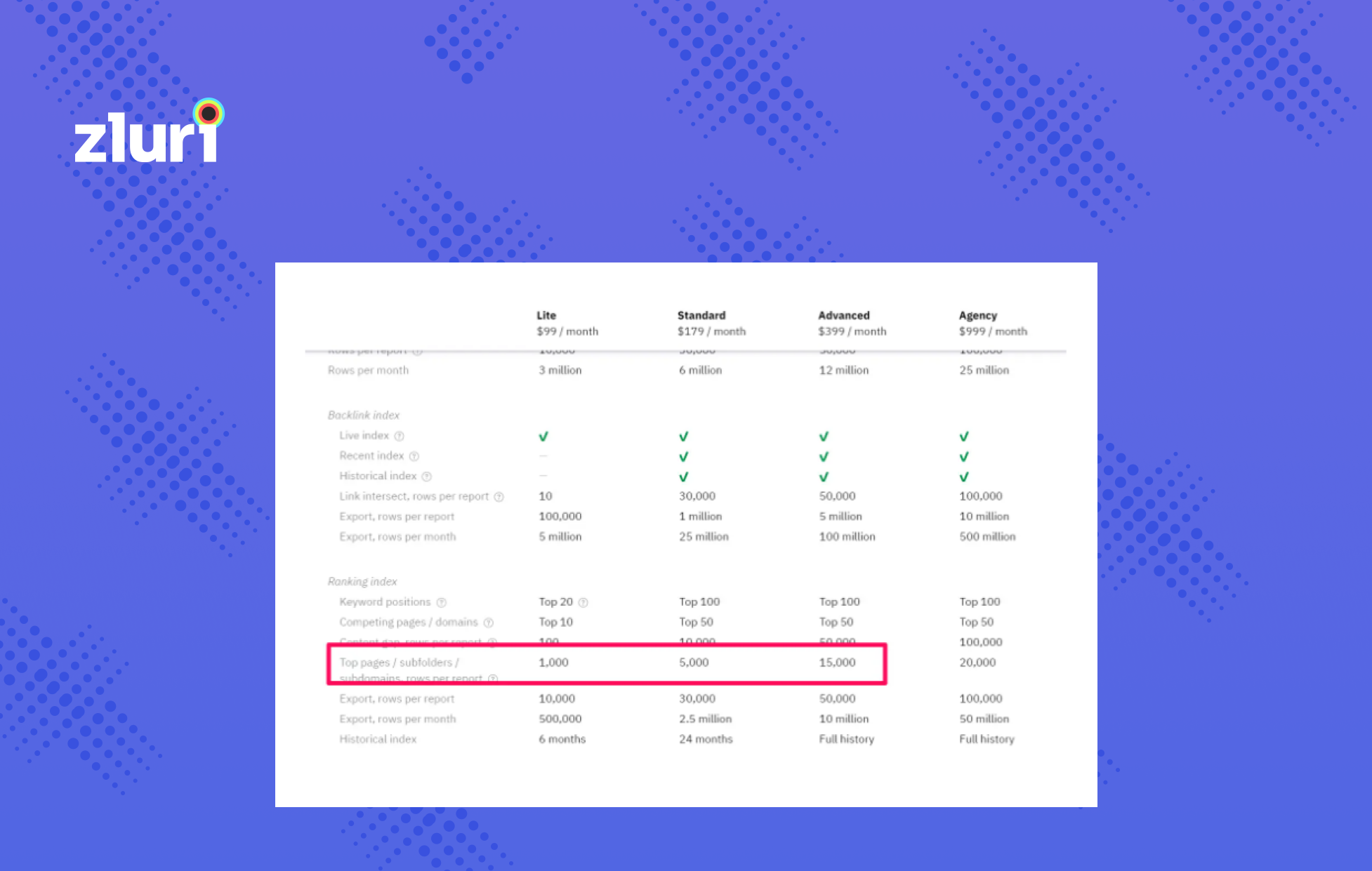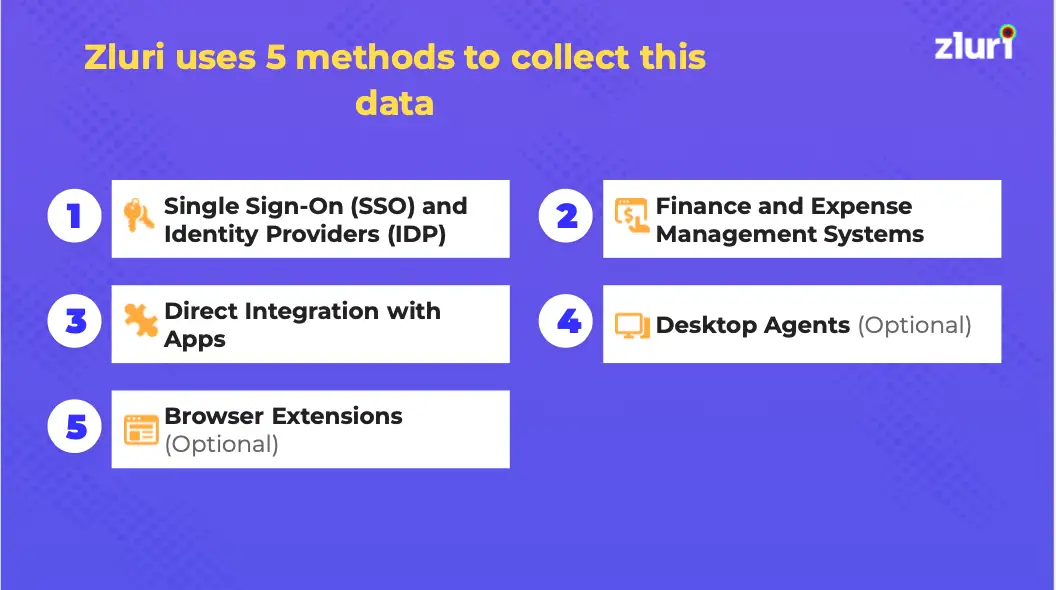SaaS Management
• 5 min read
How High-Growth Companies Can Reduce SaaS Spend
15th January, 2024
SHARE ON:
In today's time, SaaS providers are springing up every day, making it difficult for companies to assess their requirements and budgets. Managing and optimizing the costs involved is a whole different story.
This article aims to explain why and how high-growth companies should put a hold on their SaaS spending to not just to survive but thrive in today's financial landscape.
There's no denying that SaaS has changed how businesses function globally. Thinking why? Well, thanks to their affordability, scalability, security measures, and reduced demands on IT teams.
High-growth companies are always searching for tools that fuel their operations and expand their financial path. As a result, the amount being spent on these SaaS applications has increased substantially.
Would you be surprised to know that organizations with over 1000 employees use 500 software applications on average, not to mention waste one-third of that budget on unused SaaS licenses?
These numbers can soon go even higher and become unmanageable. So, how, as a business, would you manage all this SaaS stress? This blog will walk you through best practices to reduce SaaS spend. But before that, let's understand how SaaS usage has grown all these years.
A Brief on Growth & Usage of SaaS Apps
Based on a recent report, in 2018, a company spent around $343,000 on SaaS, which is a 78% increase compared to the previous year.

And the average number of SaaS applications used in a company can go up to 200.

Imagine the money a company would spend while buying these SaaS software for the first time! But, come on, just a basic calculation.
SaaS should be cheaper than an on-premise setup!! Is that what you're thinking? Certainly, yes, if you know how to manage it efficiently.
Why Is It Essential To Manage SaaS Spend?
The numbers above display a pretty clear picture of how much money is wasted by high-growth companies. Is SaaS overspend limited only to such companies? Certainly not. Even the smaller companies don't go unscathed. Flexera's State of ITAM 2022 report shows that around 33% of all SaaS software spend is wasted across organizations.

However, cost saving is one of many reasons to invest in spend management. With no control over your SaaS operations, you're also putting your firm at risk of security and compliance issues.
You still might have a few questions running through your mind. To answer them, below we have mentioned some of the main reasons that explain why it is crucial to manage SaaS spend:
a. Redundant SaaS Solutions: By now, it would have been clear that enterprises overspend on SaaS applications. One of the reasons is that many of these applications have overlapping or redundant capabilities (i.e., SaaS Duplication).
"Note: You might be paying for multiple pieces of software, but these would be doing the same function as the ones you already have. This is known as SaaS Duplication."
For example:
Microsoft Teams vs. Slack
SharePoint vs. Dropbox
Asana vs. Trello
For some, redundancy won't be a big deal. But try thinking this way, an extra $20/ month or $99/year or even more! This cost can increase depending on how many licenses your organization pays for.
b. Incorrect SaaS License Type: Many SaaS applications feature different plans, some for basic users while others for advanced users. Analyzing the application usage can clarify who needs a higher license variant. Converting the other licenses to the basic level can save a lot of money.
For example- You purchase the Ahrefs Advanced plan ($399/month), which is helpful for websites with up to 15,000 pages. But, you realize that you only have 4000 pages on your website, for which the Standard plan ($179/month) is more suitable.

By switching to the Standard tier, you can save around $2640 annually per license. To avoid this excessive spending, you should closely monitor the top-tier SaaS tools you have purchased. Understand what your employees are using and instead what they require. Once analyzed, check whether switching to a less expensive plan covers everything they need.
c. Shadow IT: It is one of the factors of the lack of SaaS governance. It is defined as the usage of software applications without any approval from the stakeholders (around 80% of employees). Such applications have no record of purchase and usage. And thus, you won't have any idea where you're spending your budget.
Ensure that all your tools are properly optimized to eliminate the last-minute hassle of cost-cutting. Ensure that your spending policy mentions the following:
Who should purchase goods and services?
What is the new way to request a new purchase?
What signing authority do your managers from each department have?
Do you currently have internal tools that serve the same purpose, deeming this tool unnecessary?
How Can High-Growth Companies Streamline SaaS Spend?
No doubt, SaaS applications make it easier for organizations to function efficiently. But, no strategy to manage SaaS spend signifies that money is wasted on redundant or unwanted SaaS applications, highly-priced contracts, and excess licenses. Thus, it's essential to manage it efficiently. However, if you're looking for ways to manage your SaaS spend wisely, you can try your hands on Zluri.
Zluri, a SaaS Management tool helps you discover, manage and optimize your SaaS stack. You can compare apps and their functionalities that overlap. It also lets you downsize SaaS apps by standardizing specific tools rather than merely investing in many apps that do the same job. Zluri also helps you discard costly redundancies by eliminating SaaS wastage.
Following the right SaaS subscription management strategy, as mentioned below, you can save a lot on your SaaS spend.
1. Discovering & Mapping Users and Apps
Zluri gives an elaborative overview of all the users, applications, costs, upcoming renewals, etc. This includes discovering the applications and users and the licenses, contracts, transactions, and subscriptions associated with the relevant apps and users.

2. Essentializing usage and establishing control
Once you've created an optimal SaaS stack, it's about understanding and optimizing usage and user activity to minimize cost and risk. Here, Zluri helps you in the following ways:
Optimize usage
Establish access control
Monitor and take action on user activity
3. Optimizing cost and future expenses
Zluri's powerful mapping technology automatically associates every transaction to the application seamlessly. It then uses the insights generated from this process to optimize cost savings from your bottom line.
Spend: Cut unnecessary spending by combining app usage with license information such as plans, pricing, contract value, etc. Set budgets and manage your spending vs. cost planning.
Utilization: Eliminate any underused licenses or contracts from your system and stop inefficient license distribution across users and teams.
Estimate: Build comprehensive forecasts based on current usage and spending patterns to tighten up any leaks and prevent future overspending.
Timeline: Always stay on top of everything related to the license and eliminate dark SaaS billing with detailed timelines for contracts, auto-renewal reminders, etc.
Summing It Up
Incorporating cost-cutting practices into your daily routine can get a bit tedious, but preparing for the worst is a must.
SaaS enables enterprises to run their businesses and scale efficiently. But the costs involved due to improper management of SaaS applications can negatively impact in some way or another. Therefore, it is crucial to look for ways to help high-growth companies reduce SaaS spend and invest in other business areas.
Your business can do the following by having a dedicated procurement and management team in place:
Control costs and increase savings
Manage renewals and eliminate duplicate subscriptions
Eliminate underutilization of resources
Book a demo with us today if you want to have a detailed insight into how to save and manage your SaaS spend.
About the author
Tathagata is a Technical Content Writer with 4+ of experience in the SaaS industry. He has a keen eye for research and understanding macro trends in the SaaS & AI-based technology space. He has worked across several marketing & strategy roles in various domains like banking, e-commerce, and education sectors. In his leisure time, Tathagata is a full-time PC gamer.
Related Blogs
See More
Subscribe to our Newsletter
Get updates in your inbox
